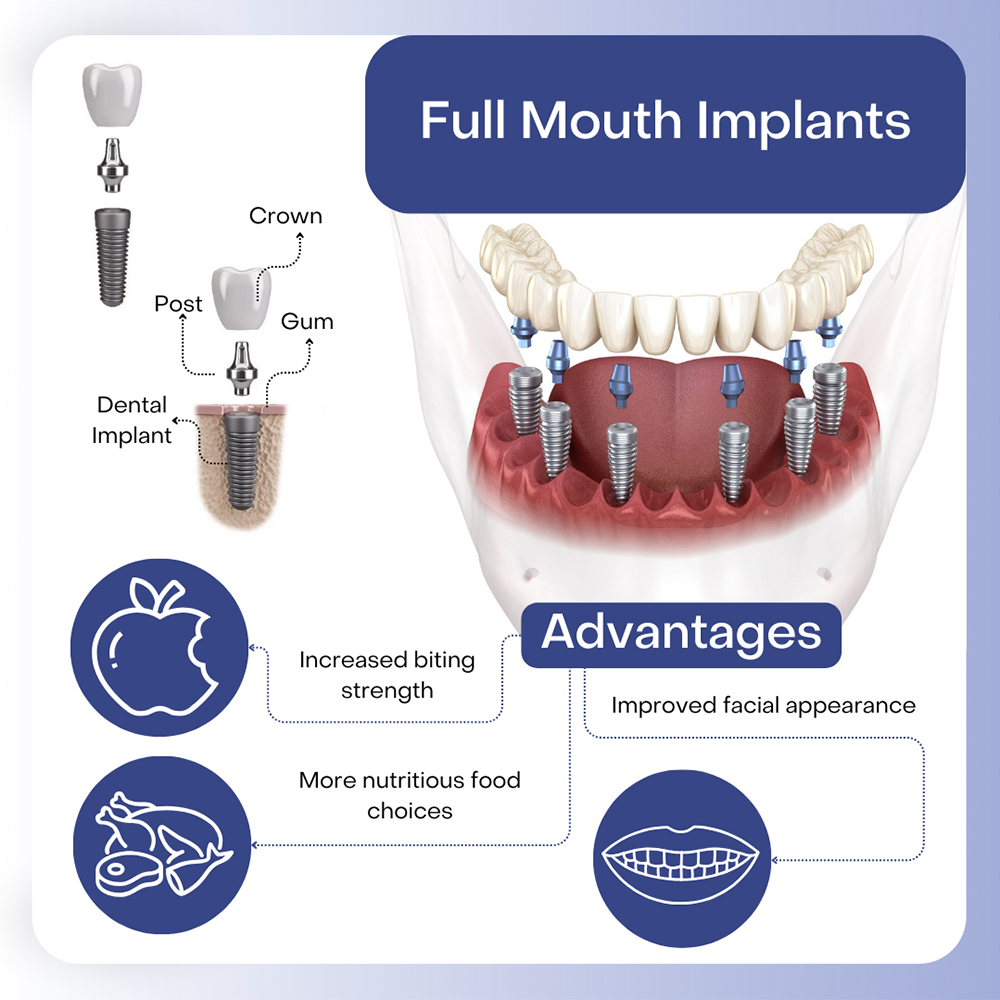Rumored Buzz on Dental Sense
Rumored Buzz on Dental Sense
Blog Article
A Biased View of Dental Sense
Table of ContentsFacts About Dental Sense RevealedLittle Known Questions About Dental Sense.The 8-Minute Rule for Dental SenseAll About Dental Sense
are clinical devices surgically implanted right into the jaw to recover a person's ability to chew or their look. They supply support for man-made (fake) teeth, such as crowns, bridges, or dentures. When a tooth is lost because of injury or illness, a person can experience issues such as rapid bone loss, faulty speech, or changes to eating patterns that cause discomfort.Dental dental implant systems include a dental implant body and oral implant joint and may likewise include an abutment addiction screw. Dental veneers cost. The dental implant body is surgically put in the jawbone in location of the tooth's root. The oral implant abutment is generally affixed to the dental implant body by the abutment fixation screw and prolongs through periodontals into the mouth to support the connected fabricated teeth
(https://www.provenexpert.com/dental-sense/)Structure of The Dental Implant System choosing dental implants, talk to your dental company about the potential advantages and threats, and whether you are a prospect for the procedure. Things to think about: Your overall health is an essential consider identifying whether you are a good prospect for dental implants, how long it will certainly require to heal, and how much time the dental implant might remain in location.
Smoking may impact the healing procedure and reduce the long-term success of the dental implant. The recovery process for the implant body may take several months or longer, during which time you generally have a temporary abutment in location of the tooth. the oral implant procedure: Thoroughly follow the oral health directions offered to you by your dental copyright.
Our Dental Sense Ideas
Implant failure can cause the requirement for another surgery to repair or replace the dental implant system. Restores the capability to eat Restores cosmetic look Assists keep the jawbone from diminishing due to bone loss Protects the wellness of the bordering bone and periodontals Helps maintain nearby (nearby) teeth secure Improves quality of life Damages to surrounding natural teeth throughout implant placement Injury to the surrounding tissues throughout surgery, such as sinus perforation Injury throughout surgical treatment (for example, fracture of bordering jawbone) Poor function, such as feeling like the teeth do not attack together typically An experience that the tooth hangs or turning in place resulting from a joint screw loosening Implant body failure (looseness of the implant body) due to systemic infection, which may be more probable in patients with unrestrained diabetes due to local infection in bone and gum tissues supporting the dental implant body due to delayed recovery, which might be more most likely in individuals that smoke Difficulty cleaning the periodontals around the dental implant, leading to bad dental health Unattended periodontal illness Post-surgical pins and needles because of nerve impingement or damages Always alert healthcare carriers and imaging specialists that you have dental implants before any magnetic resonance imaging (MRI) or x-ray procedures.
FDA is not aware of any unfavorable occasions reported for MRI or x-ray treatments with oral implants. Dental implants systems are commonly made of materials that follow global agreement criteria of the International Company for Standardization (ISO) or ASTM International. These standards have details of what makes a safe product.

A dental implant is a framework that changes a missing out on tooth. With screw-like devices, the cosmetic surgeon inserts a dental implant into the jawbone, and it acts as an anchor for a fabricated tooth, called a crown.
A Biased View of Dental Sense
Some people are not eligible for dental implant surgical procedure. It is for oral surgeons to operate on people with: severe illnessuncontrollable metabolic diseasebone or soft cells condition or click here to read infectionIf these problems are settled, an individual can have the surgery. In, oral specialists avoid operating individuals with: If people with any one of the above undertake dental implant surgical procedure, there is a greater threat of the dental implant failing.

Dental implant surgery is an individualized procedure. It's not the very same for everybody. The adhering to provides a basic overview of what you can expect your dental professional, dental cosmetic surgeon, periodontist or prosthodontist to do: Place the dental implant surgically. Offer you time to heal. Connect the article and last crown, bridge or denture.
Next off, your surgeon will carefully place the oral implant into your jaw. Lastly, your cosmetic surgeon will rearrange your gum tissues and close the cut with stitches. If your dental implant is near the front of your mouth, your dental professional will certainly make a momentary tooth for you to put on up until you recover. This way, you will not have a space in your smile while you recoup.
Dental Sense Fundamentals Explained
During the recovery phase, your jawbone must fuse to the dental implant. This process can take anywhere from three to nine months.
As soon as your dental implant heals, your dental professional can connect the abutment (tiny adapter message) and your final remediation (crown, bridge or denture). This usually takes concerning one hour to complete and may call for a 2nd minor surgery. You should not feel any pain during your oral implant treatment since your supplier will utilize medicine to numb your periodontals.
Report this page